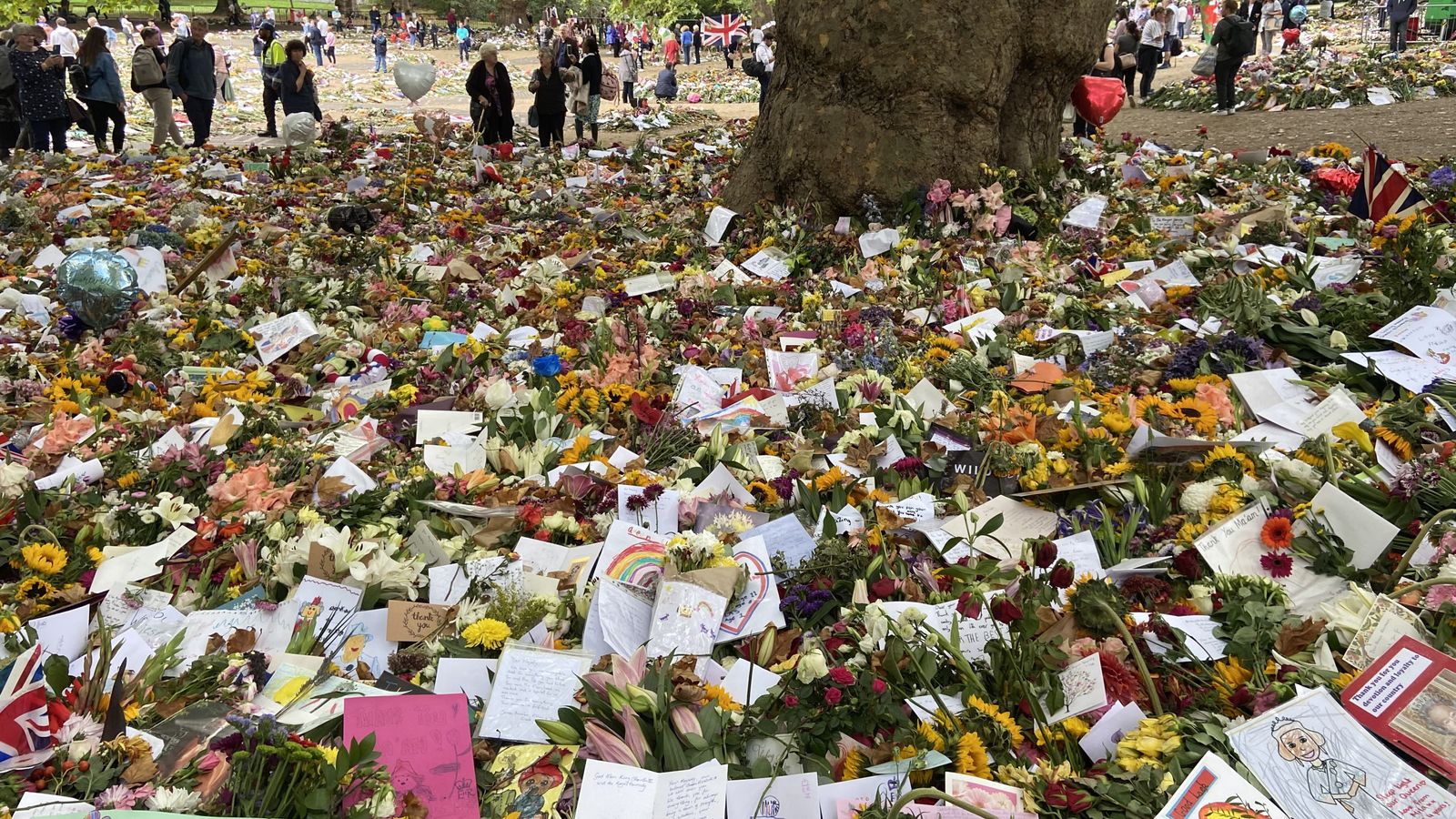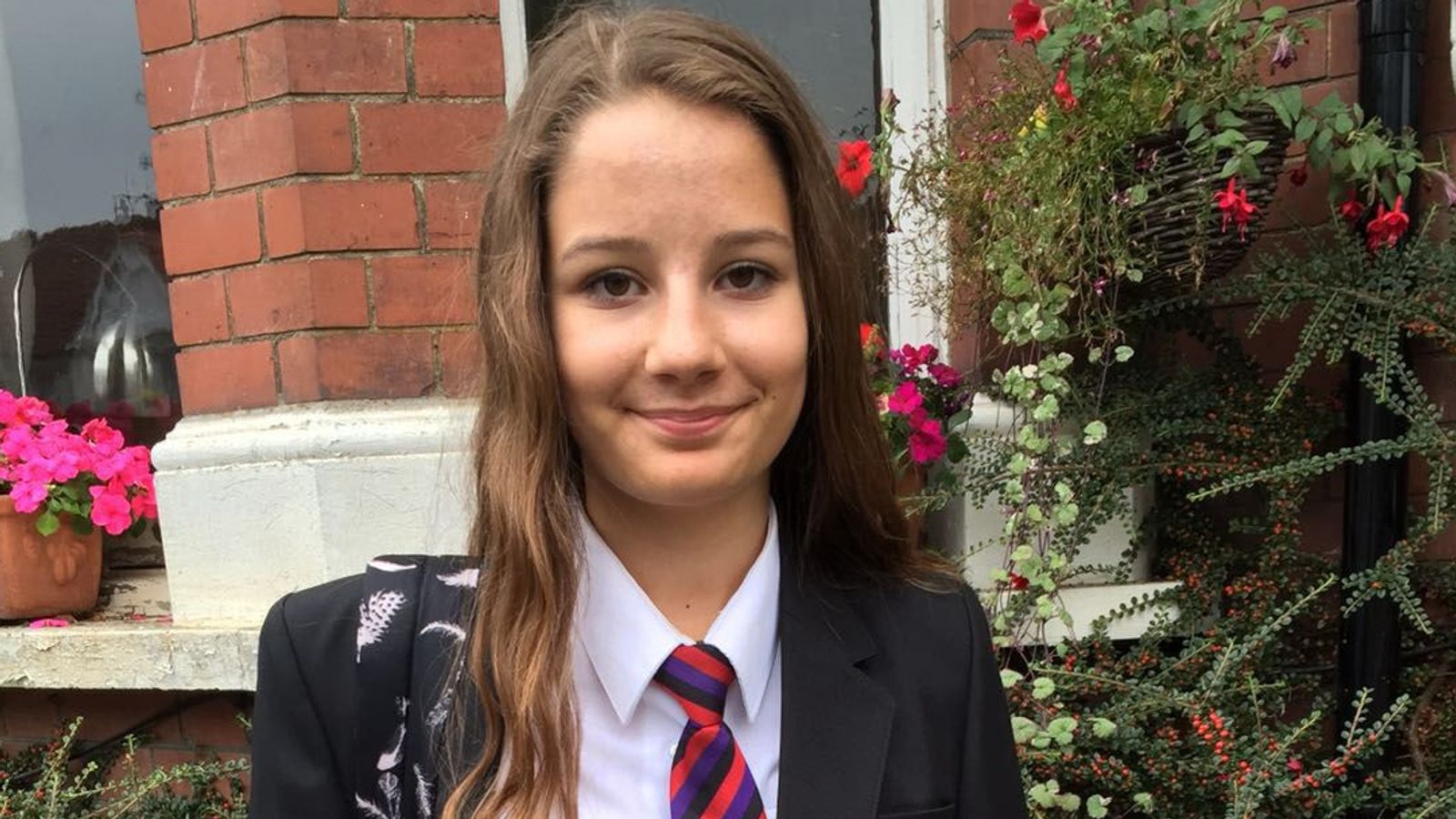Flowers left in tribute to the Queen will be composted and used in the Royal Parks for landscaping projects and shrubberies from next Monday.
Visitors will still be able to leave flowers in the Queen‘s honour, but blooms which have already deteriorated will be moved to the Hyde Park nursery.
It is expected that work to remove items laid by the public will begin on Monday, a week after the state funeral, and will continue for seven days.
Once taken away, any remaining packaging, cards and labels will be removed, before the plant material is composted in Kensington Gardens.
The compost will then be used on landscaping projects and shrubberies across the Royal Parks.
The London Royal Parks include Hyde Park, Green Park, St James’s Park, Regent’s Park and Kensington Gardens.
Sue Tovey, 57, from North Wales, travelled to the tribute site in Green Park to leave flowers with her husband and her granddaughter.
The Queen’s funeral watched by average of 26.2 million people in UK
More than 250,000 people saw the Queen lying in state in Westminster Hall in London, says culture secretary
Previously unseen photo of Queen released after private burial takes place at Windsor
She said: “I think it’s amazing because so many people have brought things down and I love how they’ve gotten rid of all the Cellophane and actually just got the bouquets. It’s beautiful, really moving isn’t it?”
Read More
Queen’s funeral: Flowers adorn Queen’s hearse as it drives to Windsor
Queen’s funeral: What was written on the card, who wore her jewellery
Belinda Barber, 56, from Huntingdon, left flowers at the Green Park tribute site.
She said: “We’re all gardeners anyway so it’s a lovely touch that this will go and get used in Royal Parks, which is fantastic. There’s going to be a lot of compost here I would’ve thought.”
In terms of other tributes, a spokesperson for the Royal Parks said: “Our priority at the moment is to manage the huge volume of flowers and tributes that are being left in the Green Park Floral Tribute Garden.
“We will store any teddies and artefacts that have been left and will work closely with our partners to agree what we do with them over the next few months with discretion and sensitivity.”





